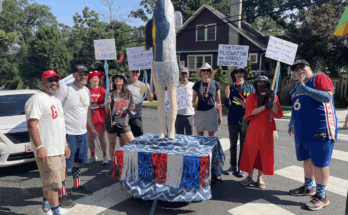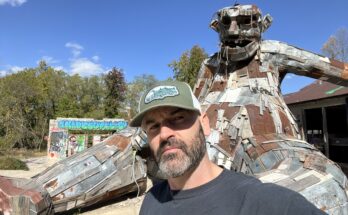This article originally appeared in .
As English artist Louis Wain’s schizophrenia worsened, his adorable anthropomorphic cat drawings turned into psychedelic pet portraits full of bright colors and repeating patterns. All of a sudden, his calendar-ready artwork twisted into something uncomfortable and otherworldly. The change in Wain’s work is profound and brings into question how much his illness influenced his art.
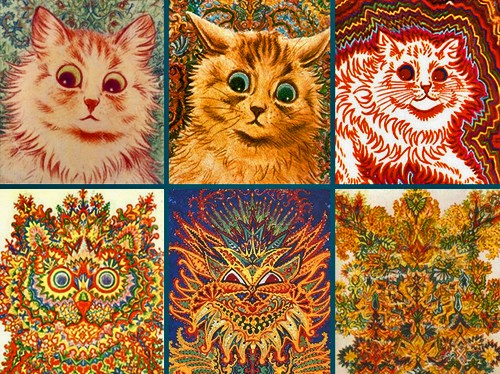
Symptoms of schizophrenia include delusions and hallucinations and, according to research, the disease impacts the way the brain processes visual information. Research shows either the disease itself, or the medication used to treat it, affects the physical properties of the eyes and changes vision. found 62% of schizophrenics reported distortion of forms, motions, or colors.
A contemporary artist with schizophrenia, says, “schizophrenia helps in having vision. Literal vision, metaphorical vision. What artist would not like having a unique personal vision? This is our gift. We are tapping into something so primitive, so primeval, and yes, so mystical. We have devoted our lives to it.”
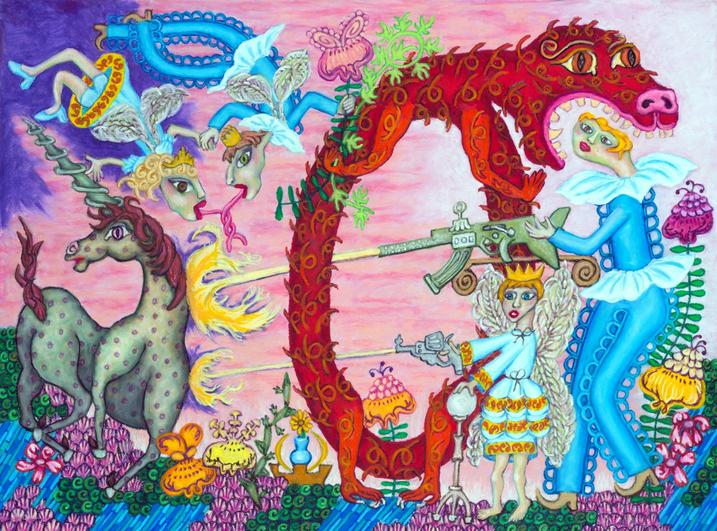
While the disease may help with artistic vision, it can hinder productivity. Sorensen asserts, “the art is made despite the illness. If I’m too ill, I can’t work. A huge part of being an artist is labor.”
The works collected here show commonalities in their surreal subject matter, bright colors, and repetitions. There are numerous anecdotal examples of mentally ill artists with unique vision that led to innovation. is the most notable example. There are also concrete examples of how art created by the mentally ill directly changed art history.
In the early 1900s, German psychiatrist Hans Prinzhorn began collecting the art of the mentally ill and writing about it. His , currently housed in Heidelberg, Germany, has influenced many modernist painters. said the collection showed “direct spiritual vision.” Surrealist pioneer brought Prinzhorn’s book to poets and in 1922 as the two were working on their surrealist manifesto. Clearly, Prinzhorn helped fuel the surrealist movement.
Prinzhorn collected the paintings of whose work, like that of Louis Wain, shows a sharp turn as his schizophrenia progressed. Originally, a painter of controlled, realistic work, he moved toward more imaginative subjects and distorted figures. Suddenly, fairies and trolls popped up in his work. “It’s obvious from these paintings what Dadd’s illness did for him, as an artist. It liberated him from Victorian pedantry,” Jonathan Jones .
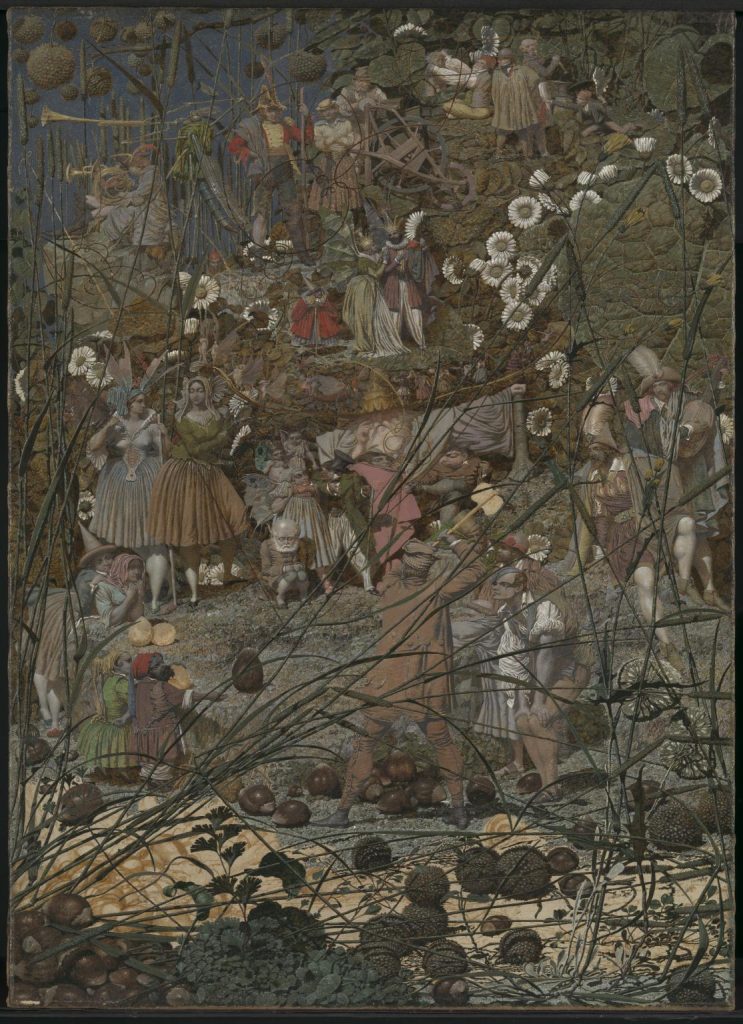
is often remembered by her tumultuous relationship with her famous husband, F. Scott Fitzgerald. However, Zelda was a talented artist in her own right, as a writer, dancer, and painter. She was also schizophrenic. Her paintings are dreamlike images that play with perspective and bend human form. Zelda Fitzgerald died in a sanitarium fire in 1948.
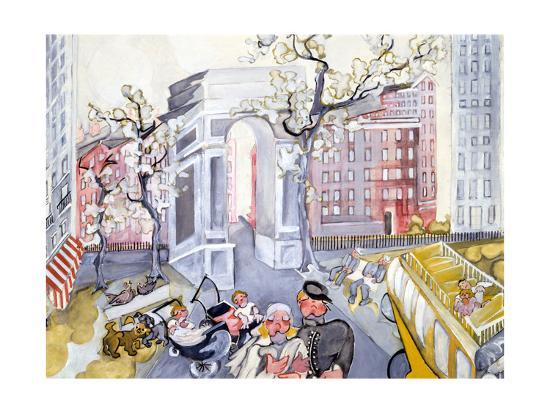
German artist rose to prominence after World War II. Amidst the rubble of the German empire that valued realistic art, Sonnenstern’s wild, dark subject matter became an important part of the surrealist movement. A former fortune teller and con man, Sonnenstern talked freely about his schizophrenia knowing a good backstory made him valuable in the emerging mark for self-taught, visionary artists. Nonetheless, his battle with schizophrenia was real and his unearthly images remain powerful and haunting.
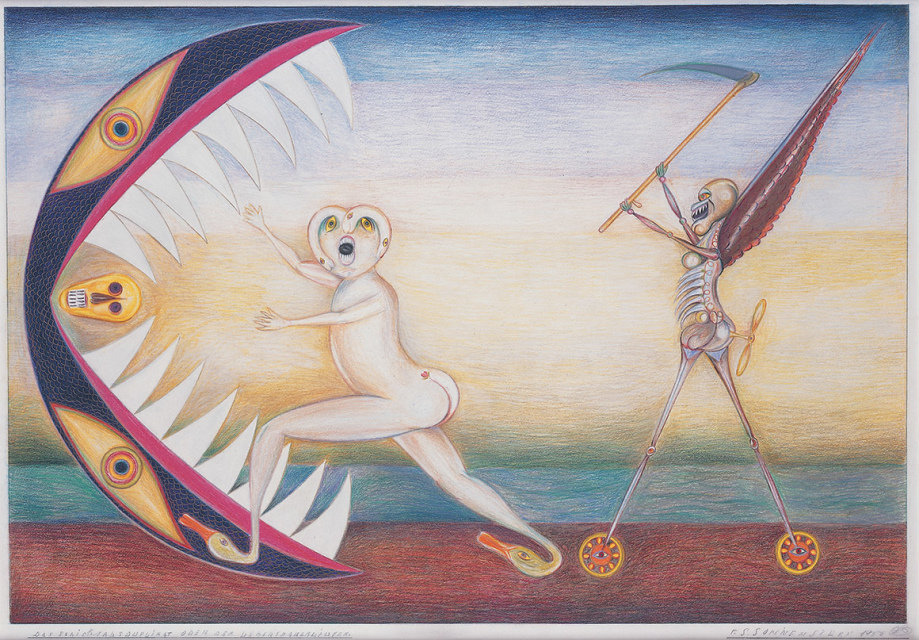
Repetition, stark color contrasts, and stylized human figures are common features of work. A veteran of both the Spanish Civil War and World War II, Zinelli was institutionalized in 1947 due to his schizophrenia. Shortly after being admitted, he lost his ability to communicate verbally. He began drawing in 1955 and became a prolific artist before his death in 1974. Self-taught, Zinelli painted on sheets and hospital walls as well as canvases.
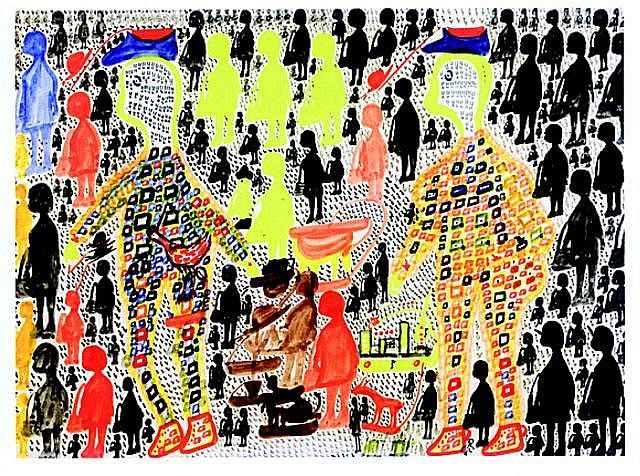
In the late 1940s, French artist began collecting work from “outsider artists” or “raw art.” His collection, like Prinzhorn’s, influenced other artists and helped redefine what was considered important work.
Dubuffet collected the work of Swiss artist who was twice arrested for indecent exposure and later admitted to a hospital in 1889 at the age of 35. Diagnosed with schizophrenia, he remained hospitalized for the rest of his life and became a prolific artist, composer, and writer.
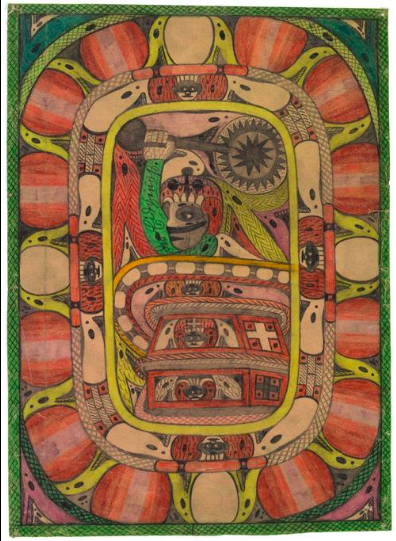
Another artist in Dubuffet’s collection, , began working in secret in a psychiatric hospital and created art with flower petals, leaves, toothpaste, and paper scraps.
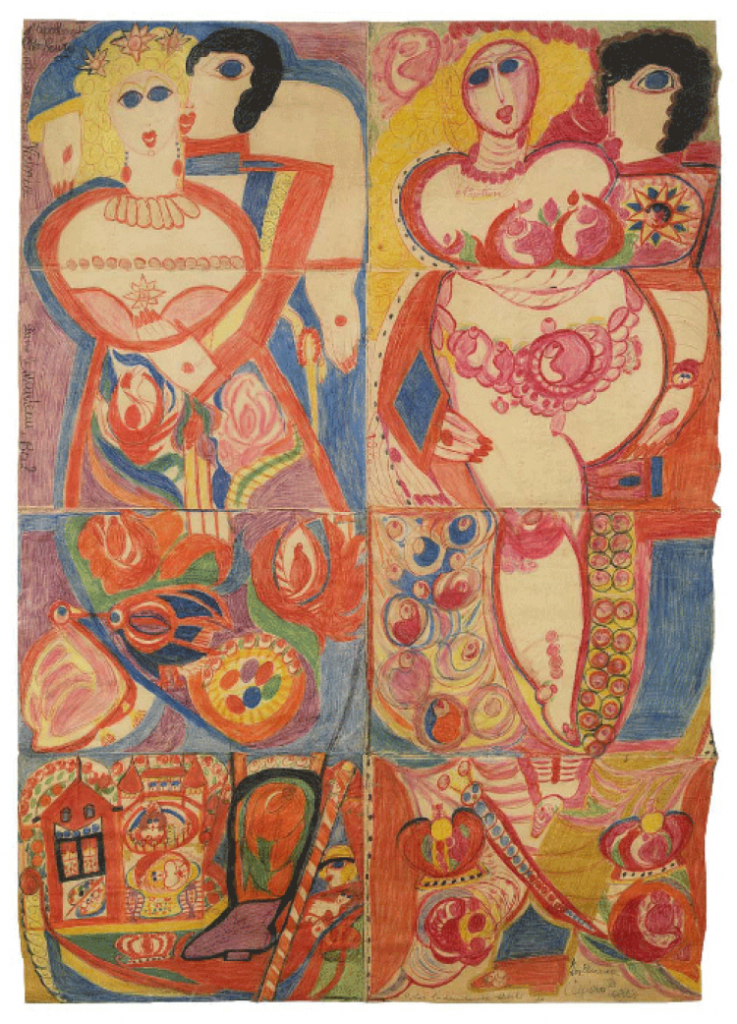
Sorensen says, “What a schizophrenic artist notices, and makes important in their art is often a little removed from mainstream depictions. This is because our awareness has more elements of the primitive in it. If someone is interested, and decides to research schizophrenic art, I bet that they are looking for new viewpoints.”
Clearly, the distinct visions of schizophrenic artists have influenced the progression of modern art. The images collected here make up a unique amalgamation of mesmerizing, attention-worthy art. Looking at this work through the common lens of the artists’ shared brain anomaly, gives us a glimpse into different perspectives of reality.
Note:
The author thanks for her assistance in the development of this piece.


